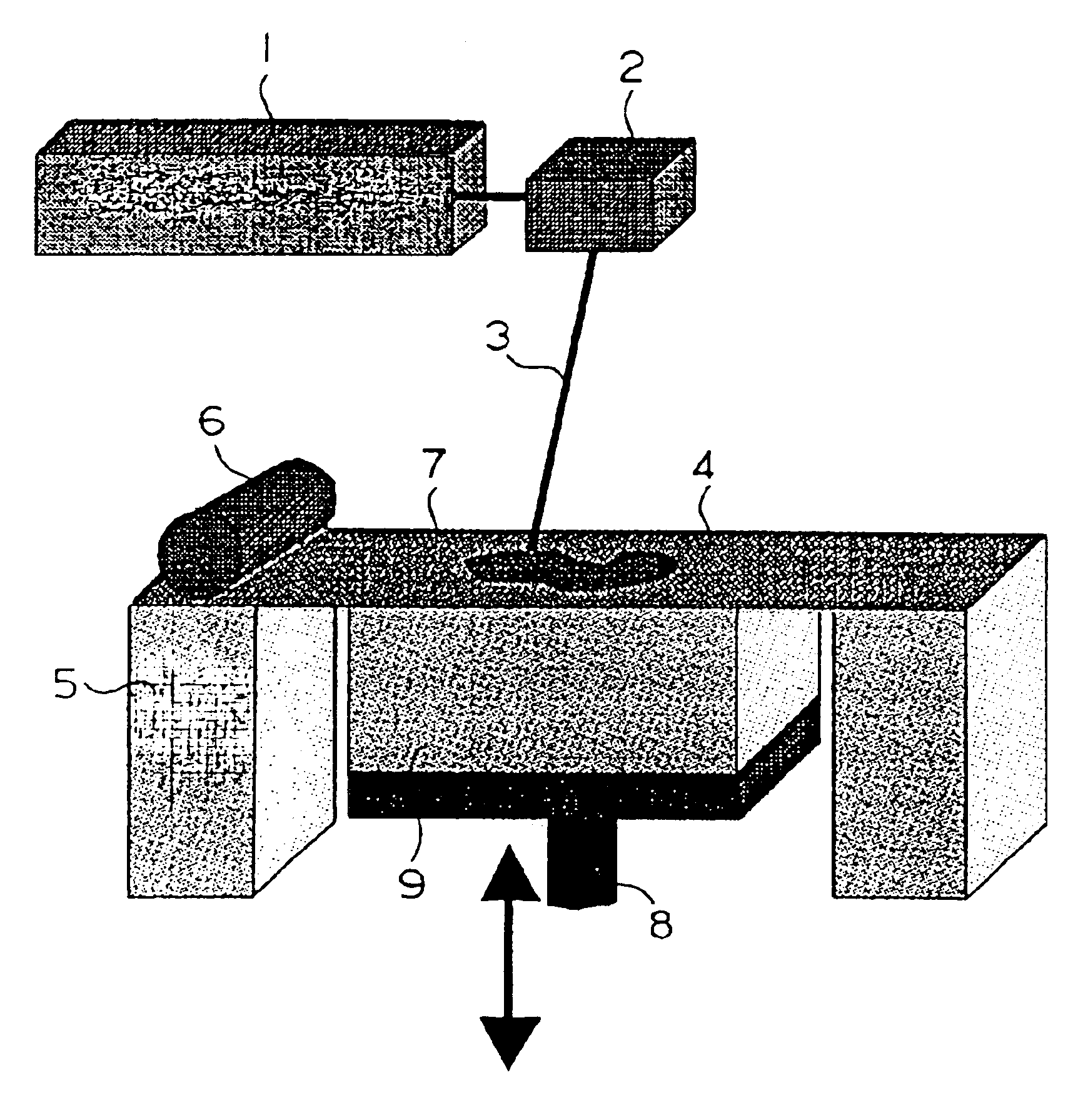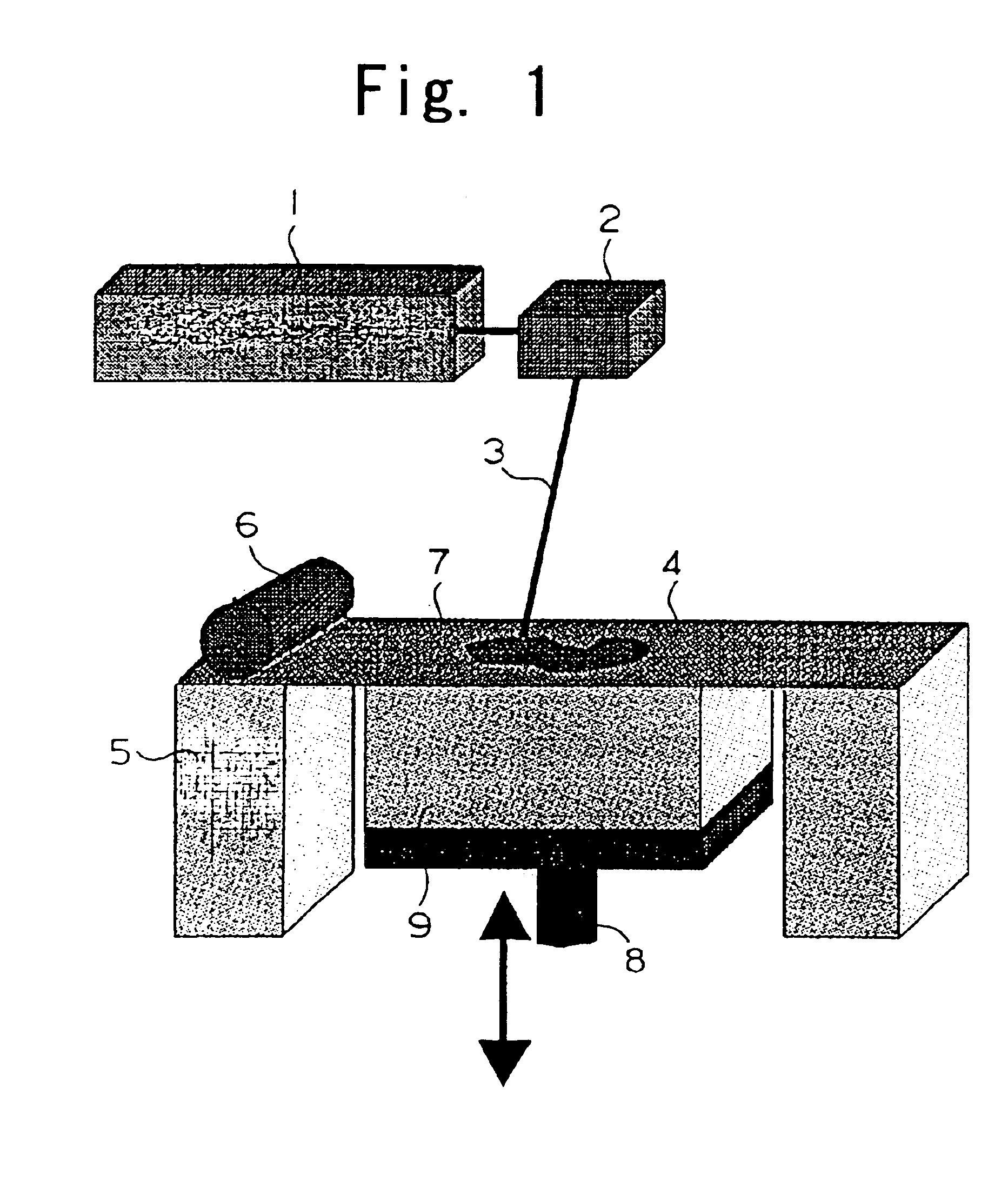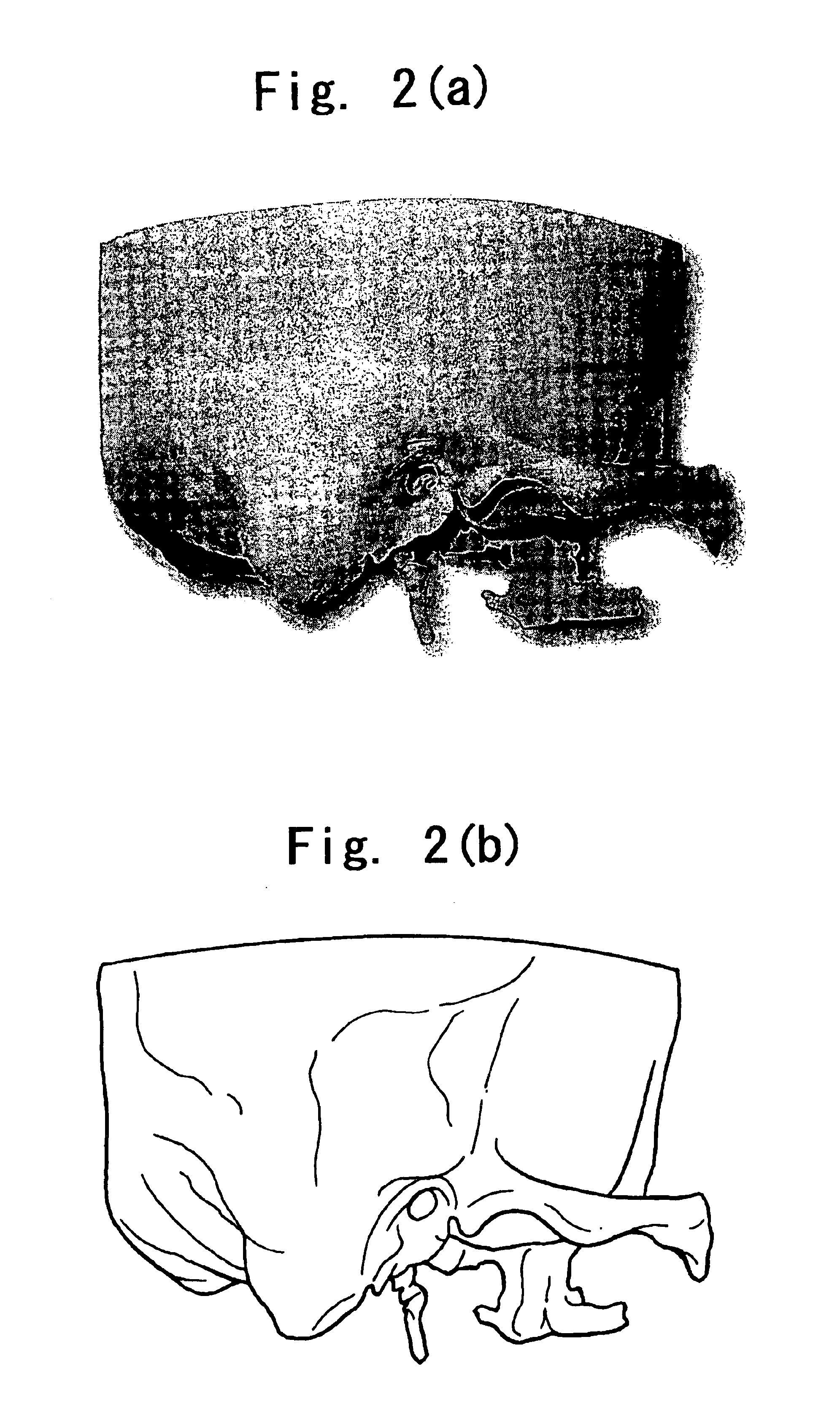Process for producing an artificial bone model and an artificial bone model produced by the process
a technology of artificial bone and process, which is applied in the field of process for producing artificial bone models and artificial bone models produced by the process, can solve the problems of difficult bone acquisition for educational, training and experimental purposes, limited bone size which can be taken, and large load on the patient's body, so as to reduce the load on the patient, improve the skill of the patient, and reduce the time for the operation
- Summary
- Abstract
- Description
- Claims
- Application Information
AI Technical Summary
Benefits of technology
Problems solved by technology
Method used
Image
Examples
example 1
[0064]An artificial bone model of the auditory organ of the human being consisting of the external ear, the middle ear and the internal ear was prepared in accordance with the selective laser sintering process.
[0065]A mixture of 70% by weight of powder of nylon 11 having spherical particles having an average diameter of 58 μm and 30% by weight of glass beads having an average diameter of 60 μm was used as the powder material for sintering. An apparatus for the selective laser sintering process equipped with the 100 W carbon dioxide gas laser was used as the apparatus for the preparation of a model.
[0066]Pictures of bones in the region of the external ear to the internal ear of an adult male were taken in accordance with the X-ray computer tomography and converted into data for the preparation of a model. The obtained data were input into the apparatus for the preparation of a model. Layers of the sintered powder material were formed by sintering the material successively at a pitch ...
example 2
[0068]A 3-dimensionnal (3-D) model of human temporal bone was created using selective laser sintering process using a powder material for sintering used in Example 1. CT scanning raw data of a human temporal bone was taken in the horizontal plane using Asteion MDCT (Manufactured by Toshiba) with 0.5 mm of slice width, 2.5 of helical pitch and interval of image production of 0.1 mm. The data was transferred with DICOM system. The intensity value for extracting the bone shadow was determined based upon this sliced images. The derived 3-D data was converted into STL file system. The powder material for sintering was laser sintered according to the STL data extracting the bony shadow. The sintered layers were accumulated by 0.1 mm pitch. The created model was dissected under microscope using conventional surgical drill, bur, suction irrigator and instruments. The whole appearance of the model is shown in FIGS. 2(a) and 2(b). Any detailed surface structure, such as Henle's spine and tymp...
example 3
[0070]A model of congenital auditory atresia in a case of 11-year-old boy who wished to reconstruct the ear canal and ossicular chain was created in a similar method used in Example 2. The CT showed the astesia, hypoplastic middle ear cleft and ossicular anomaly. The model well reproduced the surface and inner structures (FIG. 6(a) and FIG. 6(b)). Dissection demonstrated the hypoplastic middle ear cleft and unusual location of the oval window. The oval window existed so anterioly that it was nearly hidden behind the mandibular joint space. Based on these findings, high surgical risk was expected and surgery was not dared.
PUM
| Property | Measurement | Unit |
|---|---|---|
| Percent by mass | aaaaa | aaaaa |
| Percent by mass | aaaaa | aaaaa |
| Diameter | aaaaa | aaaaa |
Abstract
Description
Claims
Application Information
 Login to View More
Login to View More - R&D
- Intellectual Property
- Life Sciences
- Materials
- Tech Scout
- Unparalleled Data Quality
- Higher Quality Content
- 60% Fewer Hallucinations
Browse by: Latest US Patents, China's latest patents, Technical Efficacy Thesaurus, Application Domain, Technology Topic, Popular Technical Reports.
© 2025 PatSnap. All rights reserved.Legal|Privacy policy|Modern Slavery Act Transparency Statement|Sitemap|About US| Contact US: help@patsnap.com



